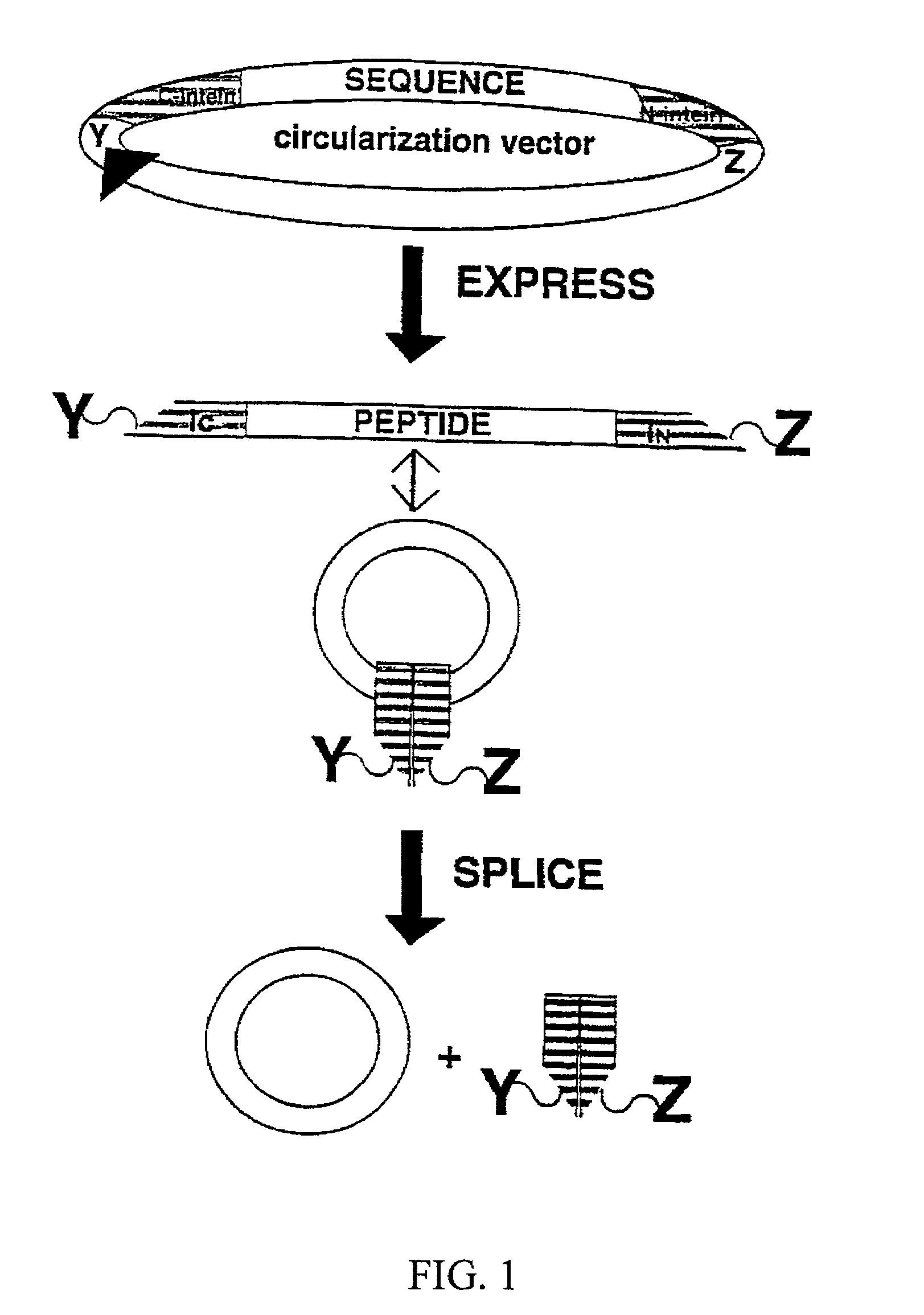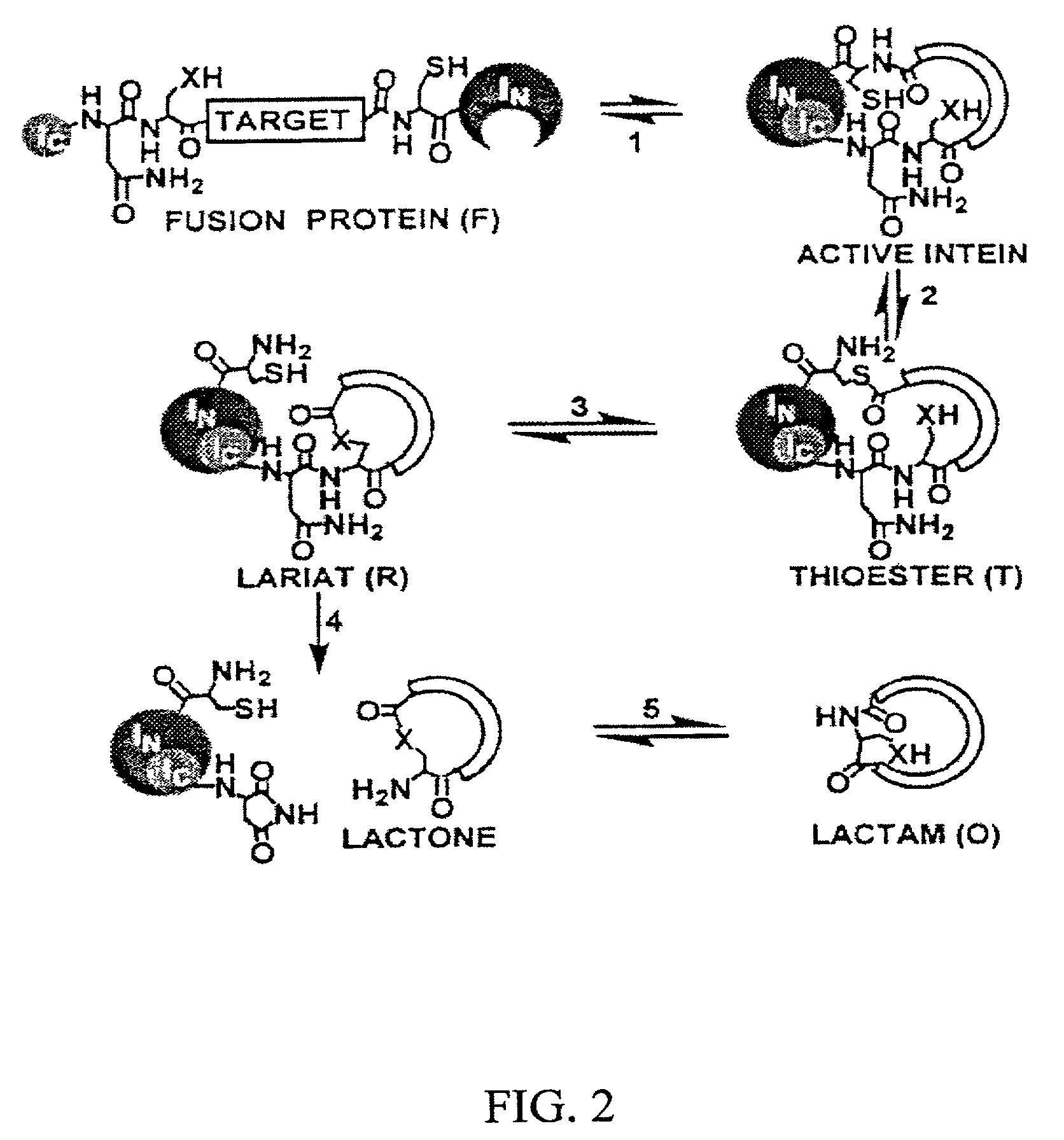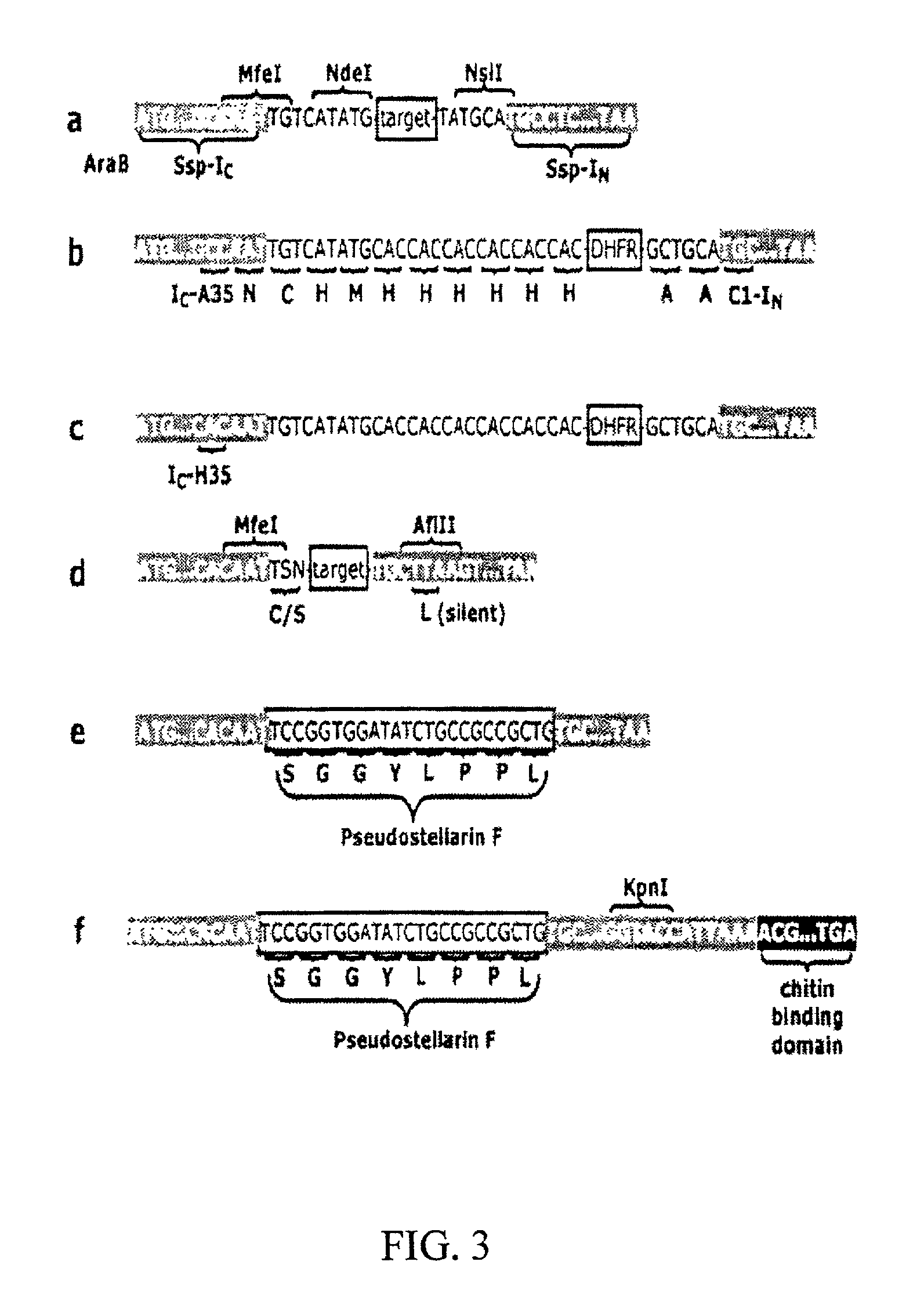Intein-mediated cyclization of peptides
a cyclization and peptide technology, applied in the field of biochemistry, can solve the problems of inherently limited pool of naturally-existing cyclic peptides that can be screened for a particular biological activity, costly and impractical screening, laborious and time-consuming screening assays,
- Summary
- Abstract
- Description
- Claims
- Application Information
AI Technical Summary
Benefits of technology
Problems solved by technology
Method used
Image
Examples
Embodiment Construction
[0081]The trans-splicing ability of split inteins has been exploited to develop a general method of producing cyclic peptides and splicing intermediate displaying peptides in a looped conformation. In this method, a target peptide is interposed between two portions of a split intein in a precursor polypeptide. In an appropriate host system, the two portions of the split intein physically come together to form an active intein in a conformation that also forces the target peptide into a loop configuration. In this configuration, the ester isomer of the amino acid at the junction between one of the intein portions (e.g., IN) and the target peptide is stabilized such that heteroatom from the other portion of the intein (e.g., IC) can then react with the ester to from a cyclic ester intermediate. The active intein then catalyzes the formation of an aminosuccinimide that liberates a cyclized form of the target peptide (i.e., a lactone form), which then spontaneously rearranges to form th...
PUM
| Property | Measurement | Unit |
|---|---|---|
| time- | aaaaa | aaaaa |
| time- | aaaaa | aaaaa |
| molecular weights | aaaaa | aaaaa |
Abstract
Description
Claims
Application Information
 Login to View More
Login to View More - R&D
- Intellectual Property
- Life Sciences
- Materials
- Tech Scout
- Unparalleled Data Quality
- Higher Quality Content
- 60% Fewer Hallucinations
Browse by: Latest US Patents, China's latest patents, Technical Efficacy Thesaurus, Application Domain, Technology Topic, Popular Technical Reports.
© 2025 PatSnap. All rights reserved.Legal|Privacy policy|Modern Slavery Act Transparency Statement|Sitemap|About US| Contact US: help@patsnap.com



